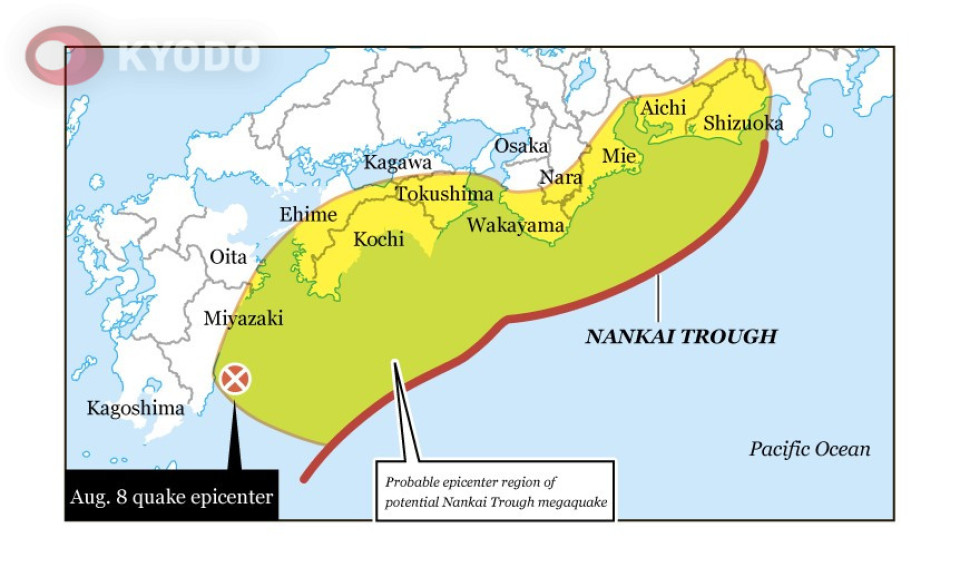Japan’s Megaquake Threat
Japan faces threat from potential megaquakes, particularly along the Nankai Trough. Recent government estimates suggest a catastrophic event could lead to substantial loss of life and economic damage. This follows a magnitude 7.1 earthquake in 2024 that injured several people. As Japan prepares for the possibility of a megaquake, the urgency for effective disaster preparedness intensifies.
About Nankai Trough
The Nankai Trough is a 900-kilometre undersea fault off Japan’s Pacific coast. It stretches from Shizuoka to Kyushu. The region is tectonically active due to the subduction of the Philippine Sea Plate beneath the Eurasian Plate. This geological process creates immense strain, which can lead to powerful earthquakes.
Probability of Megaquakes
The Japanese government estimates a 70-80% chance of a magnitude 8 to 9 earthquake occurring within the next 30 years. Historical data shows that quakes recur every 100 to 200 years. The last major earthquake in this region occurred in 1946. This alarming probability puts stress on the need for preparedness.
Potential Casualties and Evacuations
In the event of a megaquake, projections indicate that approximately 298,000 people could die. This includes 215,000 from tsunamis and 73,000 from building collapses. The disaster could also lead to 1.23 million evacuees. This figure represents about 10% of Japan’s total population. The timing of the quake, especially during winter nights, could worsen the casualty figures.
Economic Impact
The economic ramifications of a megaquake could be staggering. Current estimates suggest potential losses of up to $2 trillion. This figure reflects updated assessments that account for inflation and changing terrain data. The economic damage could represent nearly half of Japan’s GDP. Such a disaster would disrupt Japan’s economy and infrastructure.
Lessons from Past Disasters
Japan’s experience with the 2011 Tōhoku earthquake and tsunami informs current preparedness efforts. The 2011 disaster resulted in over 18,000 deaths and caused the Fukushima nuclear crisis. The lessons learned from this event have prompted improvements in early-warning systems and disaster response strategies.
Preparedness and Response
Japan has implemented various measures to enhance disaster preparedness. This includes public education campaigns, improved infrastructure, and advanced warning systems. Despite these efforts, experts warn that the scale of a potential megaquake could exceed previous disasters.
Scientific Research and Monitoring
Ongoing research by universities and governmental bodies focuses on understanding the risks associated with the Nankai Trough. Studies indicate that a magnitude 7+ earthquake could increase the likelihood of subsequent tremors. Continuous monitoring of tectonic activity is crucial for timely warnings.
Month: Current Affairs - April, 2025
Category: Environment Current Affairs








